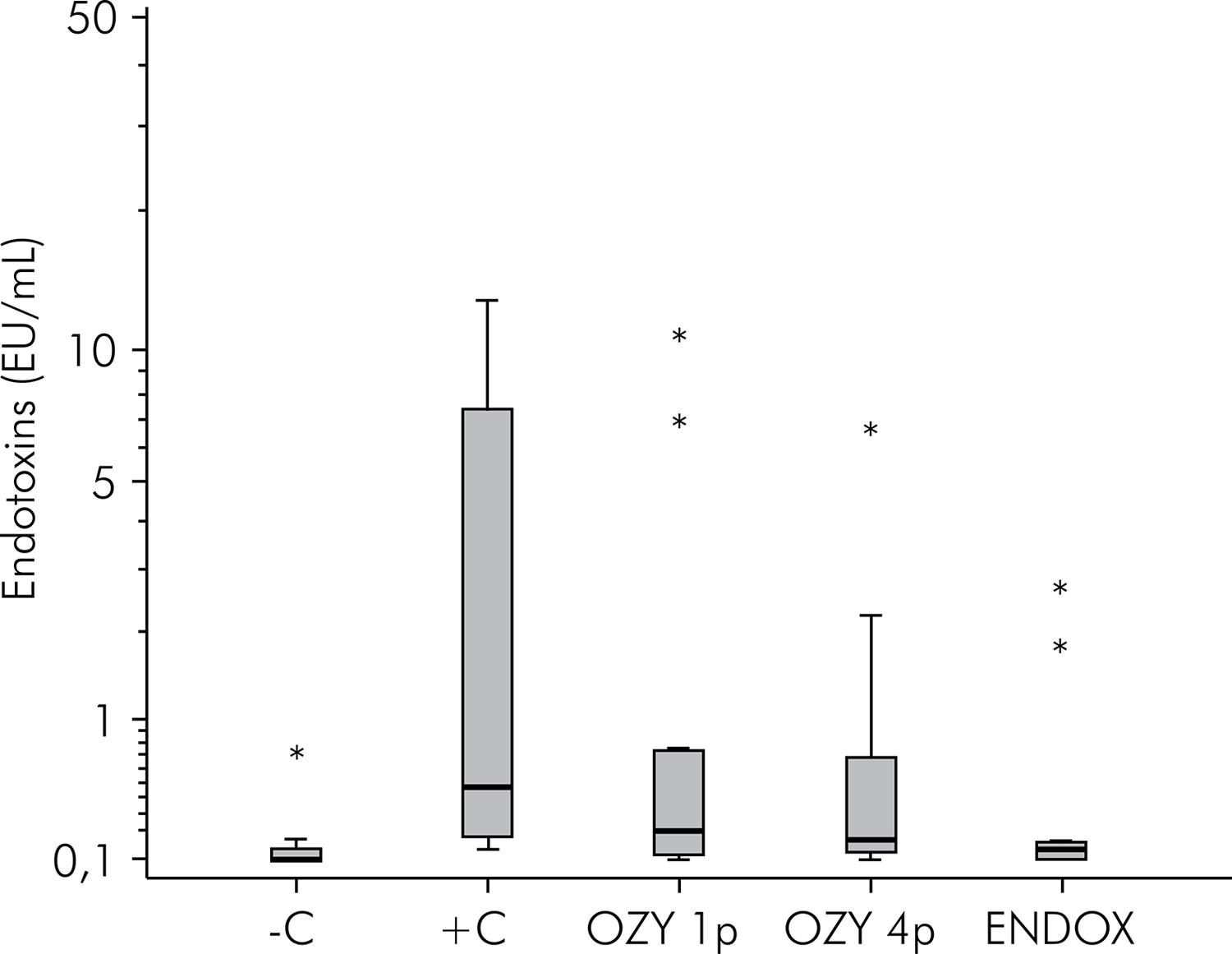Abstract
The present study aims to verify the effect of ozone gas (OZY® System) and high frequency electric pulse (Endox® System) systems on human root canals previously contaminated with Escherichia colilipopolysaccharide (LPS). Fifty single-rooted teeth had their dental crowns removed and root lengths standardized to 16 mm. The root canals were prepared up to #60 hand K-files and sterilized using gamma radiation with cobalt 60. The specimens were divided into the following five groups (n = 10) based on the disinfection protocol used: OZY® System, one 120-second-pulse (OZY 1p); OZY® System, four 24-second-pulses (OZY 4p); and Endox® System (ENDOX). Contaminated and non-contaminated canals were exposed only to apyrogenic water and used as positive (C+) and negative (C-) controls, respectively. LPS (O55:B55) was administered in all root canals except those belonging to group C-. After performing disinfection, LPS samples were collected from the canals using apyrogenic paper tips. Limulus Amoebocyte Lysate (LAL) was used to quantify the LPS levels, and the data obtained was analyzed using one-way ANOVA. The disinfection protocols used were unable to reduce the LPS levels significantly (p = 0.019). The use of ozone gas and high frequency electric pulses was not effective in eliminating LPS from the root canals.
Endodontics; Endotoxins; Microbiology; Root Canal Therapy


